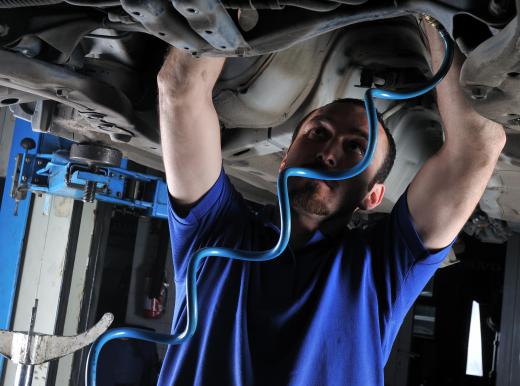Compressor filters are devices used on air compressors to filter dirt particles from the intake air supply, to remove contaminants from the compressor lubricating oil, and to trap moisture in the compressed output air flow. Intake air and oil filters generally feature cassette-type inserts made of cellulose, felted material or woven fabrics. Water filters generally consist of a glass bowl and filter element that separate condensate from the compressed air. The bowls have a drain cock on the bottom to periodically remove all of the trapped water. Compressors of all types benefit significantly from the inclusion of all compressor filter types, and, consequently, a regular inspection of these elements will ensure the longevity of the compressor and the integrity of the compressed air supply.
Compressors are devices that draw atmospheric air into a compression head where it is pressurized and stored in a tank or reservoir for later use. Common uses of the compressed air include driving pneumatic tools, spray painting, or sand blasting. Unfortunately, compressors draw all contaminants present in the air into the system as well. An accumulation of condensation is also an unavoidable by-product of the air compression cycle. Lubricating oil from the compressor head also finds its way into the stored air and, along with dust and moisture, can play havoc with sensitive tools, hoses, or sprayed paint.

The most effective way of removing a significant volume of these contaminants is the use of a compressor filter. These devices fall into three basic categories that address all of the common contaminant issues experienced with compressed air systems. The first of these categories are the family of intake air filters. Typically consisting of a cassette type insert in a closed cylinder, these devices are placed in the compressor's intake air line, where they remove most airborne dust particles. These filter elements are generally made of woven fabrics, cellulose fiber, or felted materials.
The second type of compressor filter is the moisture filter or trap. These filters consist of a filter element in a glass bowl. The structure of the filter causes a cyclonic internal flow pattern, which separates most of the condensate from the compressor's output air. The water collects in the bowl where it is later drained using a small valve on its bottom section. Combination compressor filter models that remove leached lubrication oil and water are also available.
The last type of compressor filter is a standard oil filter that ensures the compressor's lubrication oil is kept free of contaminants. These are also cassette-type filters that have specialized core elements similar to an automobile oil filter. The longevity of the compressor mechanism, hoses, and all of the equipment that it drives, as well as the quality of spray paint jobs completed with compressed air, can be enhanced considerably by having these filters in place. For this reason, these filters should be inspected regularly and replaced immediately if worn or defective.
